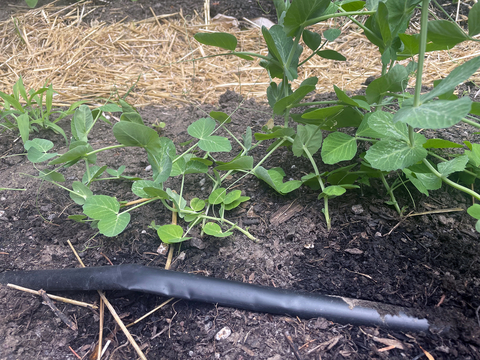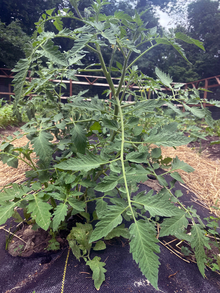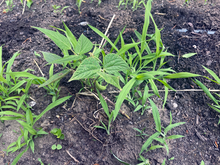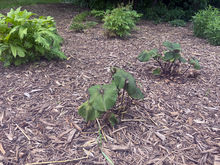We’ve just experienced a couple of weeks of very warm temperatures, and meteorologists are predicting that we’ll continue to see above-average temperatures this summer.
What does this mean for how we manage our gardens?
Water wisely
Parts of Minnesota are experiencing drought conditions and cities have begun to instate watering restrictions, so make sure to check on your local ordinances. In many communities, this looks like only watering on certain days of the week according to the side of the street you live on or even/odd addresses.
- Water your plants in the morning as early as possible. This allows the soil and your plants to absorb more water because in the heat of the day there is more evaporation occurring at the soil surface.
- Drip irrigation is ideal because it deposits water directly at the soil surface and can be targeted.
- Watering by hand is also quite effective; water as close to the soil surface as possible.
- If you need to use sprinklers, use sprinklers that deposit water low to the ground rather than spraying high into the air to minimize evaporation.
How much water is needed?
The average vegetable garden needs about 1 inch of rain per week. This looks like:
- 62 gallons for a 10x10 area.
- About 20 gallons for a 4x8 raised bed.
During extremely hot weather (daytime temperatures above 90F and nighttime temperatures above 70F), try to water daily or every other day. In a 10x10-foot garden, this would mean giving your plants 8 to 9 gallons of water each day.
If you’re watering with a hose, fill a container with a known volume (like a gallon of milk or a 5-gallon bucket) and calculate how long it takes. Multiply that by the number of gallons needed to figure out how long you should leave the hose on.
Find out more about watering wisely during drought and other challenging conditions.
Prune carefully
June is a great time to prune your tomatoes and certain other plants like lilacs. However, keep in mind that when it’s extremely hot outside, your plants are stressed. Pruning is another stressor so, if possible, try to wait until conditions have cooled slightly to prune your plants.
Only prune when there is no rain in the forecast and humidity is low. This limits the likelihood of infection as the plants heal the wounds left by pruning.
After pruning, give your plants plenty of water, applied directly to the roots.
Weed, weed, weed!
While weeds also need water to grow, many common weeds are well adapted to drought conditions, and heat allows them to grow quickly. Try to get out every couple of days in June to remove weeds from your garden; they are easier to remove when they are small, and they can quickly become a lot of work to manage.
Keep in mind that weeds are also using precious water so, by removing them, you’ll reduce some of the competition for your garden plants.
Right plant, right place
Droughts offer us insight into plants that may not be quite right for our landscapes.
Take a look at your garden: are there plants that are substantially more wilted than others? or plants that you’re watering every single day to keep alive? Perhaps that particular plant is not well suited to your landscape or that particular spot.
If certain types of plants are thriving, consider removing plants that are not doing well and replacing them with plants that are.
As you do so, investigate the soil in the area. Perhaps you have a low spot that you thought would make a good rain garden, but one side of it has much sandier soil than the rest causing it to drain more quickly.
Learn more about assessing your site and resources for choosing suitable plants.
Take care of yourself
Make sure to take breaks and drink plenty of water as you garden.
Know the signs of heat stress: headache, nausea, dizziness, weakness, irritability, thirst, heavy sweating, etc. And get help if needed.
For more information about heat-related illness, visit the CDC’s heat stress page.





